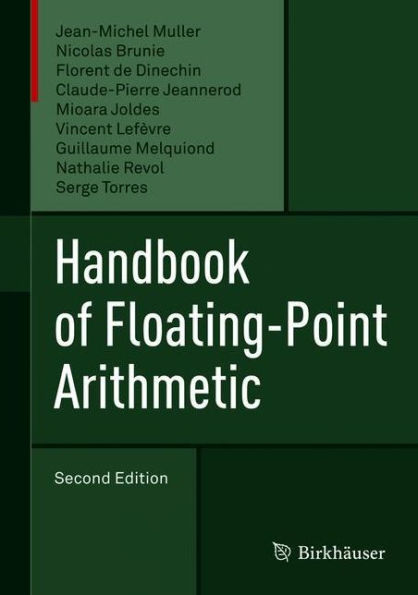5
1
9783319765259



Handbook of Floating-Point Arithmetic / Edition 2 available in Hardcover, Paperback, eBook

Handbook of Floating-Point Arithmetic / Edition 2
- ISBN-10:
- 3319765256
- ISBN-13:
- 9783319765259
- Pub. Date:
- 05/03/2018
- Publisher:
- Springer International Publishing
- ISBN-10:
- 3319765256
- ISBN-13:
- 9783319765259
- Pub. Date:
- 05/03/2018
- Publisher:
- Springer International Publishing

Handbook of Floating-Point Arithmetic / Edition 2
$169.99
169.99
In Stock

Product Details
| ISBN-13: | 9783319765259 |
|---|---|
| Publisher: | Springer International Publishing |
| Publication date: | 05/03/2018 |
| Edition description: | 2nd ed. 2018 |
| Pages: | 627 |
| Product dimensions: | 7.01(w) x 10.00(h) x (d) |
About the Author
From the B&N Reads Blog
